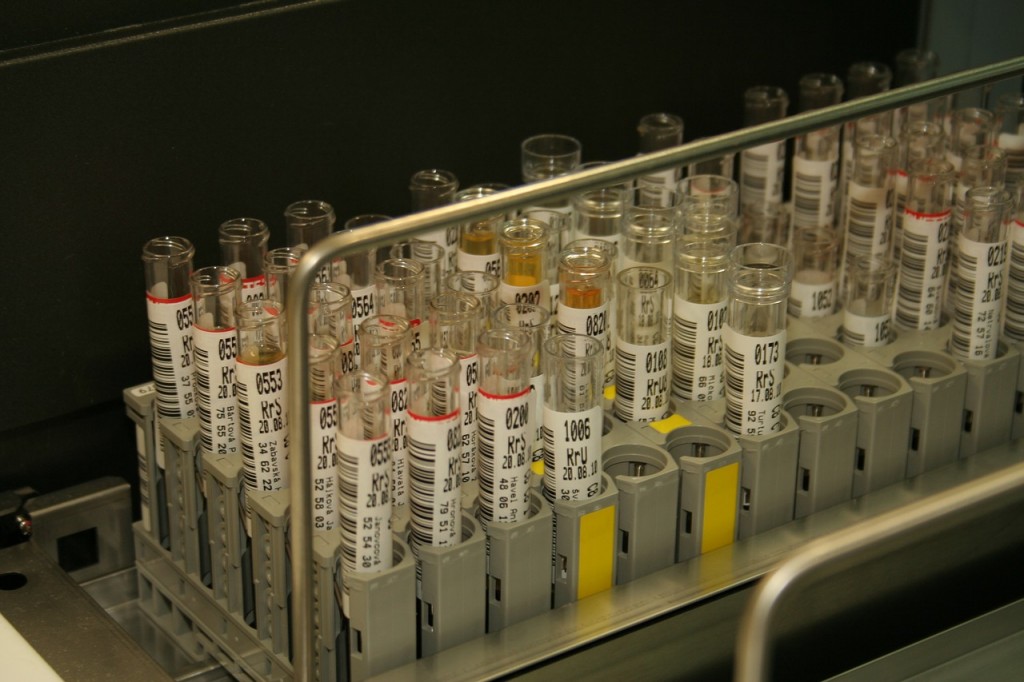Baltimore's Leading Secure Document Shredding Partner with Next-Day Service & Flexible Options – No Contracts, No Hidden Fees - Schedule Now
Fluid Medical Waste Disposal Options and Best Practices

As a Maryland medical waste removal company, we know that managing liquid waste in a medical facility poses many challenges. You have to worry about containment of the liquid, safety of your staff, as well as your growing expenses. BWS would like to provide a brief overview of different methods used today for collection and disposal of liquid medical waste, as well as the best industry practices.
Types of Fluids
There are numerous types of fluids that may require special disposal procedures. Depending on your medical practice, you may encounter the following:
- Blood
- Spinal fluids
- Saliva (especially in dental practices)
- Dialysis waste
- Amniotic fluids
- Other bodily secretions and fluids
- Lab cultures and specimen
- Medications, such as chemotherapy drugs
These fluids may be generated in numerous areas in your facility, which is where you will need to establish the collection process. Fluid medical waste is often easier to spill and more difficult to fully clean up. But when you collect it at the point of generation, it's much more manageable. Whether it's the operating suite, the lab or the ER, your employees should know the procedures and have the tools to dispose of fluid waste fast and efficiently.
Regulated Medical Waste
Most types of fluid waste fall under regulated medical waste category. Blood and other bodily fluids are often considered biohazardous or infectious waste, as they may be contaminated with hepatitis B, HIV and other dangerous pathogens and viruses. Some other fluids, such as certain medications and chemotherapy drugs may be classified as RCRA hazardous waste and will require different disposal procedures. Make sure your employees can identify the type of waste they are dealing with and apply proper collection and disposal guidelines practiced by your facility.
Collection of Liquid Waste
Liquid medical waste is typically collected into a suction canister at the point of origin. Sometimes, liquid may saturate other items, such as gauze or PPE, or materials used to clean up a spill. This waste, although technically not liquid, has a potential to release the liquid when compressed, which means special care should be taken when it comes to packaging. Liquid medical waste must be placed in closable containers specifically designed to contain the liquid and prevent leaks. The U.S. Department of Transportation (DOT) has established packaging regulations that apply to transportation of regulated medical waste, including liquid waste. DOT requires for potentially infectious liquid waste to be packaged in several layers. For certain types of waste, such as Category A waste, there has to be an absorbent material between the inner receptacle and the outer packaging in case of a spill.
Disposal of Fluid Medical Waste
There are several methods of liquid waste disposal that are used by medical facilities throughout the U.S:
Solidifying
Adding a solidifying agent to liquid waste allows to reduce the risk of spills. The solidified liquid can then be packaged into the red bag (if it's a biohazard) and disposed of as red-bag waste. If the solidifying agent contains a disinfectant, it may be possible to dispose of the waste as non-regulated medical waste, which is less expensive than red-bagging it.
Fluid Waste Management Systems
Suction-based fluid waste management systems can be integrated with your facility's sewer system to both collect and dispose of fluid waste at the same time. You can use a suction tube to transport every last drop of the liquid into the sewer for disinfection and disposal. These suction stations can be built into operating rooms or placed throughout your facility where they are most needed. They can even be mobile, rolled around from room to room and then to the disposal station. However, be sure to check with your local regulations and wastewater treatment facility to make sure that fluid medical waste is allowed to be poured in the sewer.
What NOT to Do
Don't “Cap and Can”
It used to be a common practice to place suction containers with the waste liquid into the red biohazard bags. The problem with this approach is that it can get really expensive. First of all, not all liquid waste qualifies as biohazardous, and therefore doesn't have to go into the red bag. Second of all, this prevents your facility from reusing the suction canisters, which leads to additional expenses.
Don't Pour Down the Drain
Pouring liquid waste down the drain can be dangerous, because both splashing and aerosolization may occur when a liquid is poured. This puts the employee performing this job at risk of both coming in contact with biological pathogens and spreading them. Have more questions about liquid medical waste disposal? Please, contact our experts at BWS and we'll be happy to advise you which containers to use and which federal and state regulations apply to your facility.
Ready to get started?
We offer a variety of competitively priced service options with no contracts or hidden fees. Request a free quote.
Our Dedication to Providing the Highest Quality Regulated Waste Services
is Shown in What Our Clients Say About Our Work
We provide an outstanding value and service to our regulated waste customers and pride ourselves over the last 50 years on our 100% customer satisfaction with 99% customer retention ratio.
Paul R Miller, D.D.S. and Team
ZytoGen Patient Services
Akbar Masood, D.D.S.
Chris Donaldson
Dharani Jasthi
Tomicka Jackson-George, D.M.D.
Louis Sachs, D.D.S.
Kate Blair English
Dave Ryan
Kerry Owens, Avalon Plastic Surgery
Jamie Fleming, National Spine & Pain Centers
Keith Roberts, Biomatrix Specialty Pharmacy
Mireia Pedragosa Marin, Synergy Research
Rebecca Crouse, Randolph Macon Academy
Melissa C, Patriot Chiropractic
Dr. Rosario Ignacio
Dr. Thomas Lutz, Odenton Family Dentistry
Dr. Louis Sachs, DDS
Eric B.
Brenda Shah
Stay connected - Be the first to know!
Get BWS news and promotions straight to your inbox
Don't worry. We won't sell your information!




